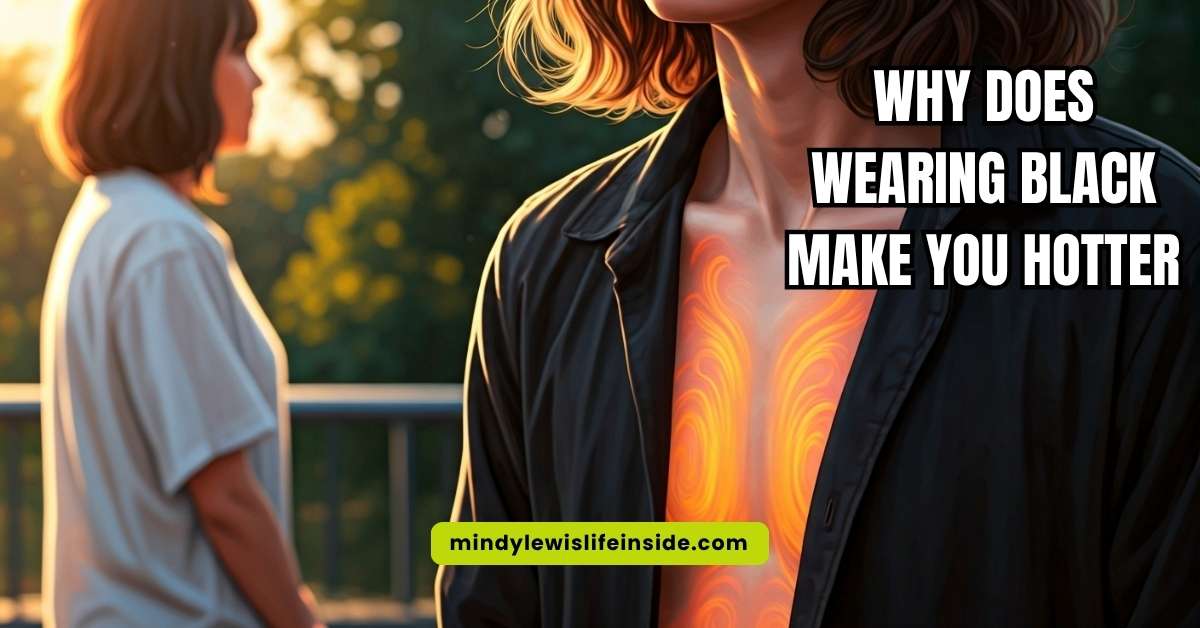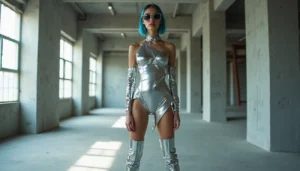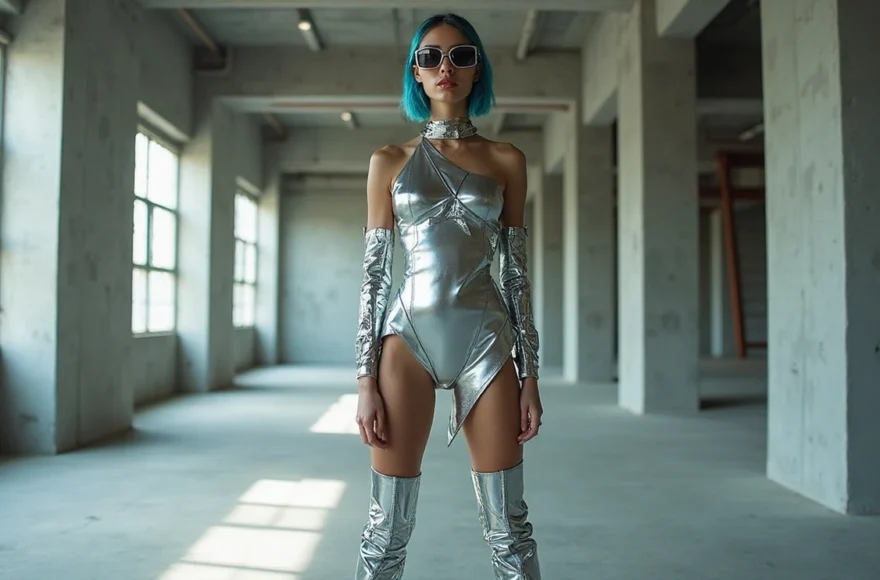Discover Why Does Wearing Black Make You Hotter Today

As an Amazon Associate, I earn from qualifying purchases
Do you like to wear black clothing but find it hard to stay cool in hot weather? You are not the only one who feels this way. Many people wonder why black clothes make us feel warmer when the sun is out. It has a lot to do with heat absorption.
Black absorbs light from the sun and holds the heat energy. Other lighter colors push this heat away. But does that mean you cannot wear black on warm days? Science shows there is more to it than you might think. Let’s find out the truth and clear up some common ideas.
The Science Behind Color and Heat Absorption
The principle that wearing black makes you hotter is rooted in physics and color science: black clothing absorbs more sunlight and thermal energy compared to lighter colors, increasing perceived heat when worn in sunny environments.
The way wavelengths of light work with fabrics is interesting. When sunlight hits what you wear, it brings white light with it. White light has many visible wavelengths. Colors on clothes reflect some wavelengths and take in others.
Dark colors, like black, take in all the wavelengths. This changes the light into heat energy. On the other hand, light colors bounce back most of the light. That means they do not hold much heat. This is why black clothing feels much warmer than light clothing. But the connection between sunlight and what we wear is not only about how well colors keep or let go of light.
How Black Clothing Absorbs Sunlight
Have you ever felt your black shirt getting too hot when you are out in the sun? There is a reason for that. Black clothing absorbs all wavelengths of visible light. While light colors send the light back out, black keeps it all. That light energy turns into heat.
Scientific experiments—like placing thermometers inside black and white shirts in the sun—consistently show that black clothing reaches higher temperatures. Some black dyes even absorb infrared radiation, amplifying the heating effect. The resulting heat is then emitted by the fabric, some of which is transferred to your skin, elevating body temperature under direct sunlight.
This heat does not stay inside the shirt. Instead, the heat goes out into the air around you and onto your skin. So, when you wear a black shirt on a hot day, it gets even hotter for you because more heat is generated and shared with you.
Because of this, black is often not as cool to wear as lighter colors. That is due to how white light works and turns into heat when black items take it in. But what if your black clothes are loose or let in air well? That might change things. We’ll talk about that soon!
What Happens to Light Energy After It’s Absorbed?
When black clothing absorbs sunlight, the light energy doesn’t just disappear—it undergoes fascinating changes. The absorbed energy transforms into heat energy, creating sensations of warmth. This heat impacts both the wearer and the surroundings.
Here’s how it works:
| Stage of Process | Explanation |
|---|---|
| Absorption of Light Energy | Black absorbs visible and infrared wavelengths, trapping solar radiation. |
| Conversion to Heat Energy | Captured energy converts directly into infrared radiation and heat. |
| Redistribution of Heat | The heat is emitted into the environment or transmitted to your skin. |
However, under certain conditions—like loose-fitting black robes—heat energy dispersal improves through ventilation, reducing discomfort even on a hot day. This is not just theory: a famous 1980 study published in Nature found that thick, loose black garments, like those worn by Bedouins and Tuareg nomads, can actually promote cooling via convection (the “chimney effect”).
While black can make you sweaty, proper fabric and fit minimize unpleasant effects. Let’s explore unique ways black clothes impact body cooling below.
Conclusion
To sum up, the science behind color shows that black clothing takes in more light and heat. This means if you wear black out in the sun, you will feel hotter. Black clothing is not always the best choice for really hot days because of its heat absorption.
But you do not have to leave your black clothes in the closet. You can still wear them if you pick lighter fabrics and pay attention to the weather around you. The key is to understand how black clothing reacts with heat and sunlight. Try new styles and see what works for you, so you can look good and feel cool at the same time.
Fashion innovators, cultural history, and modern influencers have consistently shown that black can be worn comfortably—if the outfit is loose, well-ventilated, and built from light, breathable materials. Today, black is both a style mainstay and a customizable summer statement, carried forward by trendsetters who excel at blending practicality with visual impact.
Frequently Asked Questions
Does wearing black really make you hotter than wearing white?
Yes, black clothing absorbs all wavelengths of light and turns them into heat energy. Light colors, on the other hand, push sunlight away. This makes them good choices when it is hot.
On a hot day, dark colors can make you feel hotter. It helps to wear breathable fabrics to make it feel less warm, even with dark colors. This is confirmed by scientific experiments and is widely discussed in science media and fashion outlets.
Can wearing black ever keep you cooler in certain conditions?
Yes, Bedouins do wear black robes in the desert, and there is a good reason for it. The robes are big and loose, so there is a lot of ventilation. This helps air move around and keeps them cool by letting heat get out.
Black clothing does soak up the sun, but in dry places with lots of wind, the cool breeze makes up for it. The “chimney effect” described in scientific studies shows that thick, loose black garments can actually promote cooling via convection.
Why do some cultures wear black clothing in hot climates?
For some family members and cultures, dark clothing can mean something special or have an important story. In hot weather, black clothes are often loose so that air can go in and out, which helps keep the heat away. At the same time, lighter colors are often used in the same places because they help people stay cool, too. Desert nomads are a real-world proof point: their time-tested choice of black robes, usually thick and loose, demonstrates nuanced adaptation to their blistering environment that goes beyond simple color theory.
What fabrics are best for staying cool in black clothes?
To stay cool on a hot day, go for breathable fabrics like cotton, linen, or bamboo. These types of clothes let air move around you. They help soak up sweat and move heat away from your body. On a hot day, you can wear light, breathable fabrics with black clothes.
This mix can help you feel fresher and keep you from getting too sweaty. Major designers and brands increasingly advise on how to wear black comfortably in the heat: choose breathable materials, prioritize loose or oversized silhouettes, and incorporate skin-baring details.
Is the heat difference noticeable during all seasons?
No, the way black clothing takes in heat changes depending on the conditions. On a hot day, the difference between black clothing and other dark colors is easy to notice. When it is not as hot, the difference is not as big. Things like humidity, how much sunshine there is, and if you wear dark colors, these things matter more when the weather is warm.
As an Amazon Associate, I earn from qualifying purchases









